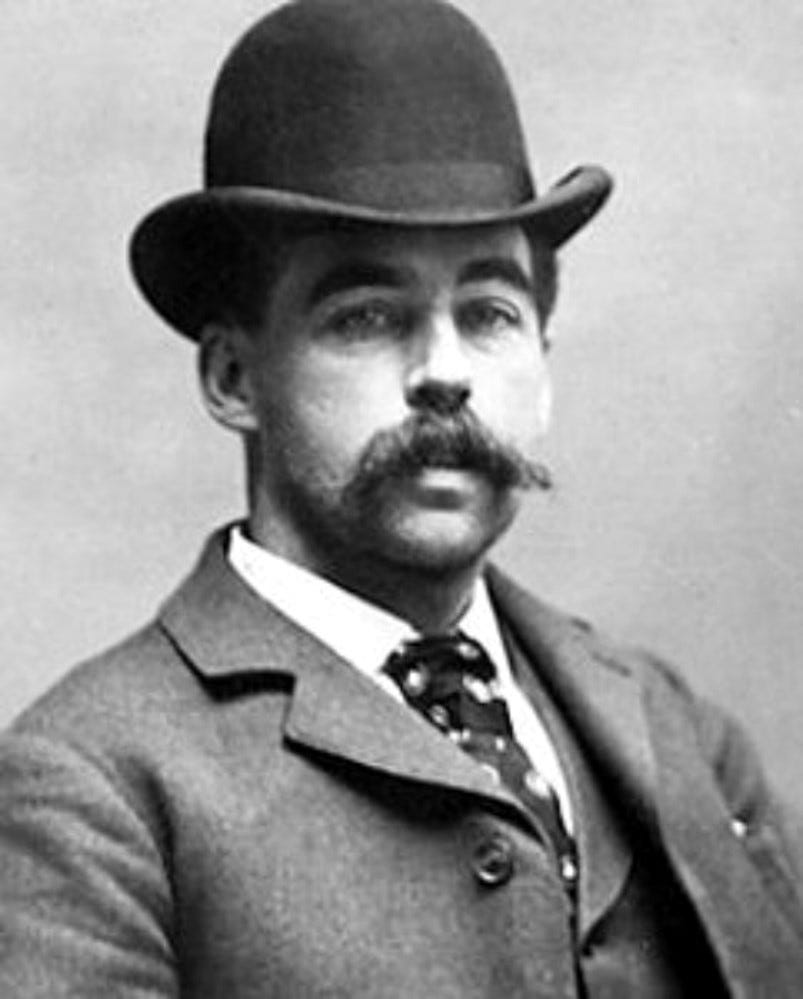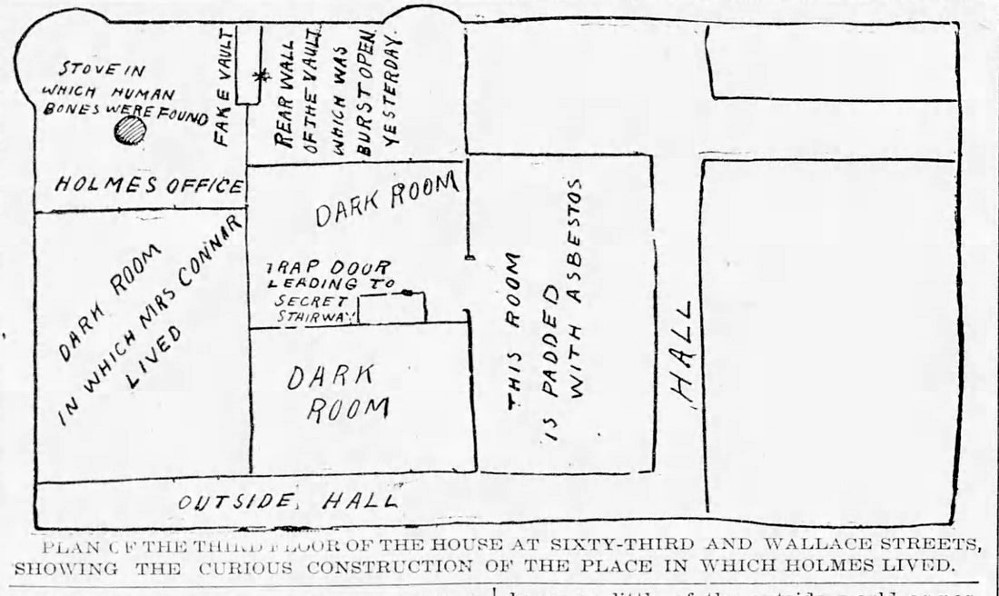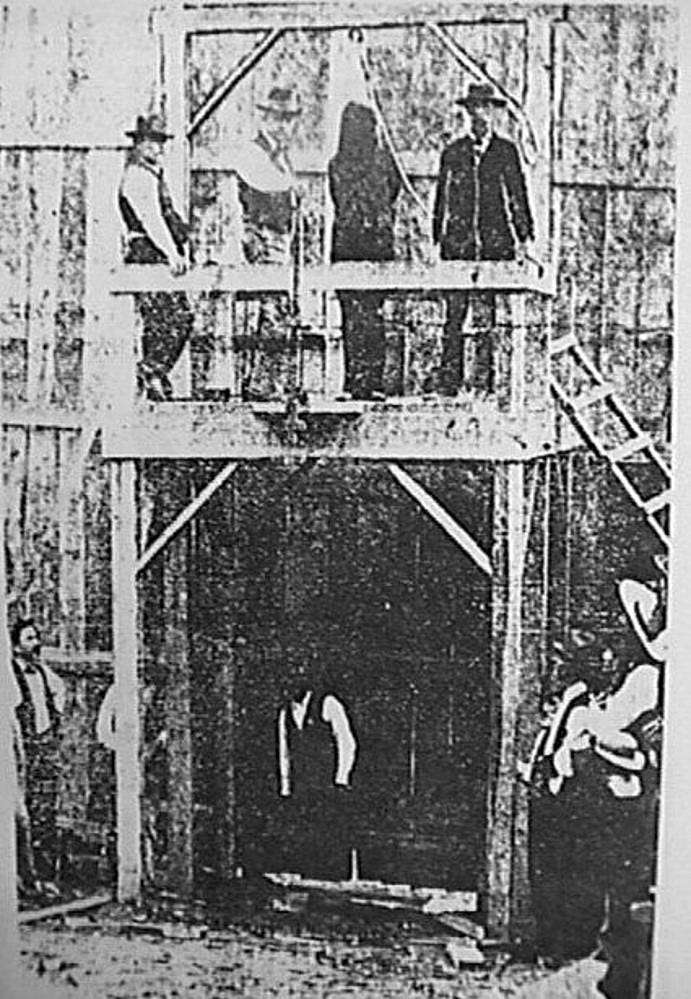Holmes' Helper
It was not until July 1895, that the atrocities committed by H. H. Holmes under the roof of the ramshackle building at the corner of Wallace and 63rd Streets, came to light.
By then Holmes had been gone from the building for a year and a half. Pat Quinlan, a carpenter by trade, stayed behind and said he acted only as H. H. Holmes janitor, but many suspected he knew more than he admitted to.
The Castle Hotel, Chicago, Illinois
On July 24, 1895, six men worked in the stench of the sub-cellar of H. H. Holmes’ Castle of Death. They first came across wet clothing buried in quicklime that turned out be a man's vest. Another man found hair strands attached to the end of his pick —each was about ten inches long. Thirty minutes later, a pick pried loose a wooden box nestled against the central foundation wall, only 3 feet below the surface.
Detectives waiting upstairs in Robinson's drugstore came to where the men continued to work. The more they dug into the soil, the worse the smell became. More clothing appeared, including something that looked like a cape a little girl would wear. So much was found that the items were laid in a heap to be inspected later.
Finally they came upon the box which once opened displayed about a dozen bones, appearing to be the ends of human ribs. The bones were taken to the drugstore for a better inspection, and it was Dr. Robinson who noted they were the spinal column of a child, about seven years of age. There was suspicion that it was the skeleton of Pearl Conner. Holmes murdered her mother Julia Conner.
Based on the discovery of human remains, the police department ordered electric lamps to be wired for lighting, instead of the candles that were being used. More diggers were hired.
The next day another bone was found, and identified as belonging to an adult foot. A quantity of animal bones were also found in a hole near the central foundation wall.
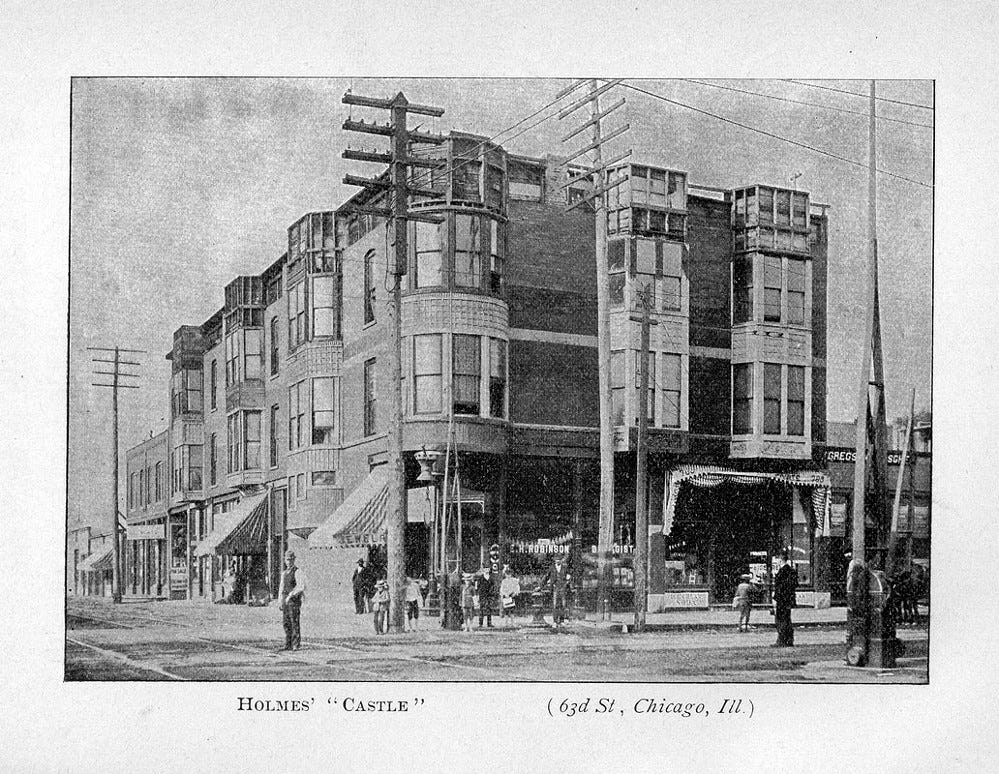
It was then the detectives became acquainted with Pat Quinlan, who had lived at the hotel with his wife Ella. He knew Holmes since 1890, and described to police that Holmes' jealously guarded his office on the third floor.
The police then inspected the jumble of rooms on the third floor. Most of them were dark and windowless, others were grated. They were all padded with asbestos to deaden sound. A hidden vault was found in Holmes' office in the northeast corner of the floor.
In the center of the building the police found a secret stair that led down to a landing, above the cellar stairs of the drugstore. Another trap door led to the cellar. The five-story structure, with two floors facing 63rd Street, and three on Wallace Street were found to be structurally dangerous. The partitions between the rooms were highly combustible. The building was shoddily constructed of the cheapest materials.
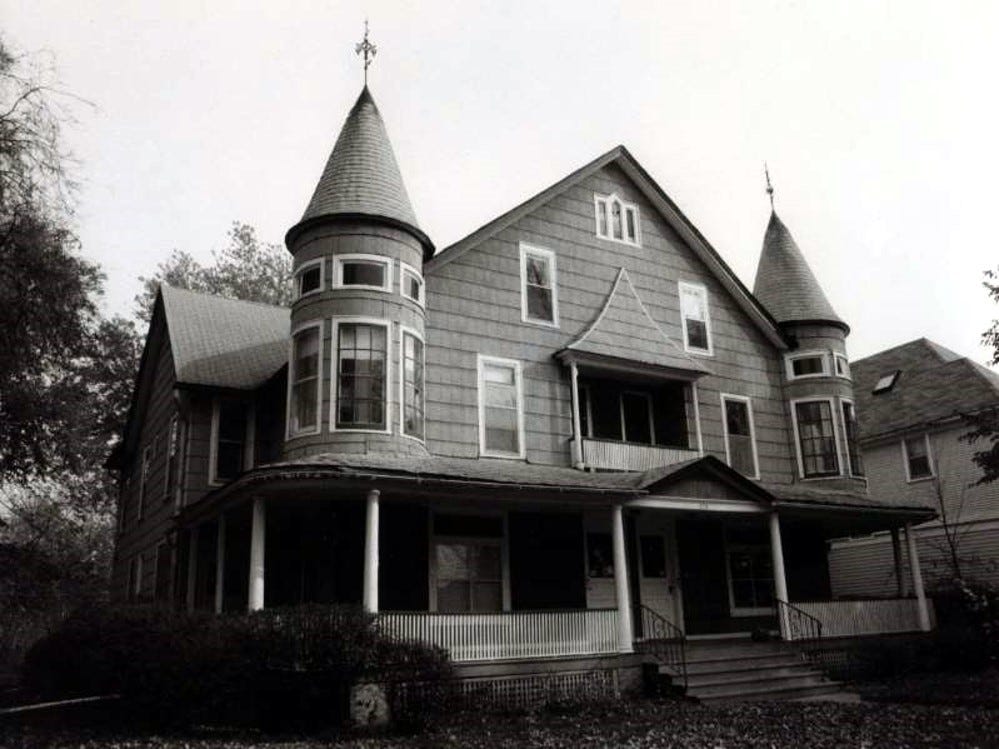
Quinlan was held by the police as a witness, but when questioned he confirmed that like himself, Mrs. Conner and her daughter Pearl had been insured by Holmes. He admitted to helping Holmes in the strange construction of the building, but then claimed he had no idea how they were being used, since he was only a janitor. It appeared he held no curiosity as to the whereabouts of the many women who visited Holmes, only to disappear later without a trace.
In the late 1880s, Holmes built a mansion located at 38 N. John St. Wilmette, Illinois (later changed to 726 11th St) where his wife, daughter and in-laws lived. Originally a small cottage occupied the lot, and he built the house piecemeal but never paid for any of the material used in the construction. It had "two front entrances, side by side, and separate front halls." Beyond the halls the house was all one. Like the "castle", rooms were secreted in unexpected places. He seldom visited, sometimes for only an hour late at night.
Quinlan was a frequent visitor to the home, and was familiar with Holmes' family despite describing himself as just a servant. Later it turned out that Pat Quinlan not only knew of Holmes’ doings, he asked for his help when he got a chambermaid pregnant.
His wife who lived in Ohio, was soon to arrive so that she could attend the 1893 World's Fair. What better place than Holmes' Hotel which was only six blocks away? Lizzie the chambermaid was visibly pregnant, and threatened to tell Quinlan's wife. She also told her sister, and it was this predicament that made Pat Quinlan come to Holmes for help in resolving his dilemma. Which he did, by luring both women to a secret room and gassing them to death.
Two years before the grisly discovery in the sub-cellar, the Castle caught fire and Holmes along with Quinlan were arrested. Bones found in the debris of the building were explained as "beef bones"; leftovers from when a restaurant operated during the World's Fair. Holmes lied his way out of jail, and soon left town.
Quinlan continued to live on the second story of the Castle, and the shops on the ground floor still conducted business.
Until August 1895, perhaps in fear of Holmes who still walked freely, Quinlan denied all knowledge of any nefarious deeds committed by his employer. Then
Once Holmes was incarcerated in Moyamensing Prison, Quinlan and his wife described him as a "dirty, lying scoundrel". He told police that he knew Holmes stole bodies from Western Michigan graveyards, which were sold to the medical departments of local universities.
The Quinlans continued to live on their 2nd floor apartment throughout Holmes' trial, however vandals started to roam the dark hallways at night, and drove them from their home.
Holmes swung from a rope on May 7, 1896, but Quinlan's punishment lasted nineteen years as he was plagued by night terrors and insomnia. He said the ghosts of Holmes' victims haunted the Castle, and would torment him by tapping on the windows. Holmes would visit him in his sleep.
The police suspected he knew secrets about the “castle”, including the trap doors, false partitions and wires that baffled the detectives.
The Quinlans returned to Portland, Michigan, however suspicious eyes and whispered gossip made it obvious that many believed he knew more about the murders than he admitted to.
Worse of all the ghosts followed him when he moved to his hometown. On March 7, 1914 Patrick Quinlan committed suicide by drinking strychnine. The note he left behind only said, "I could not sleep."






